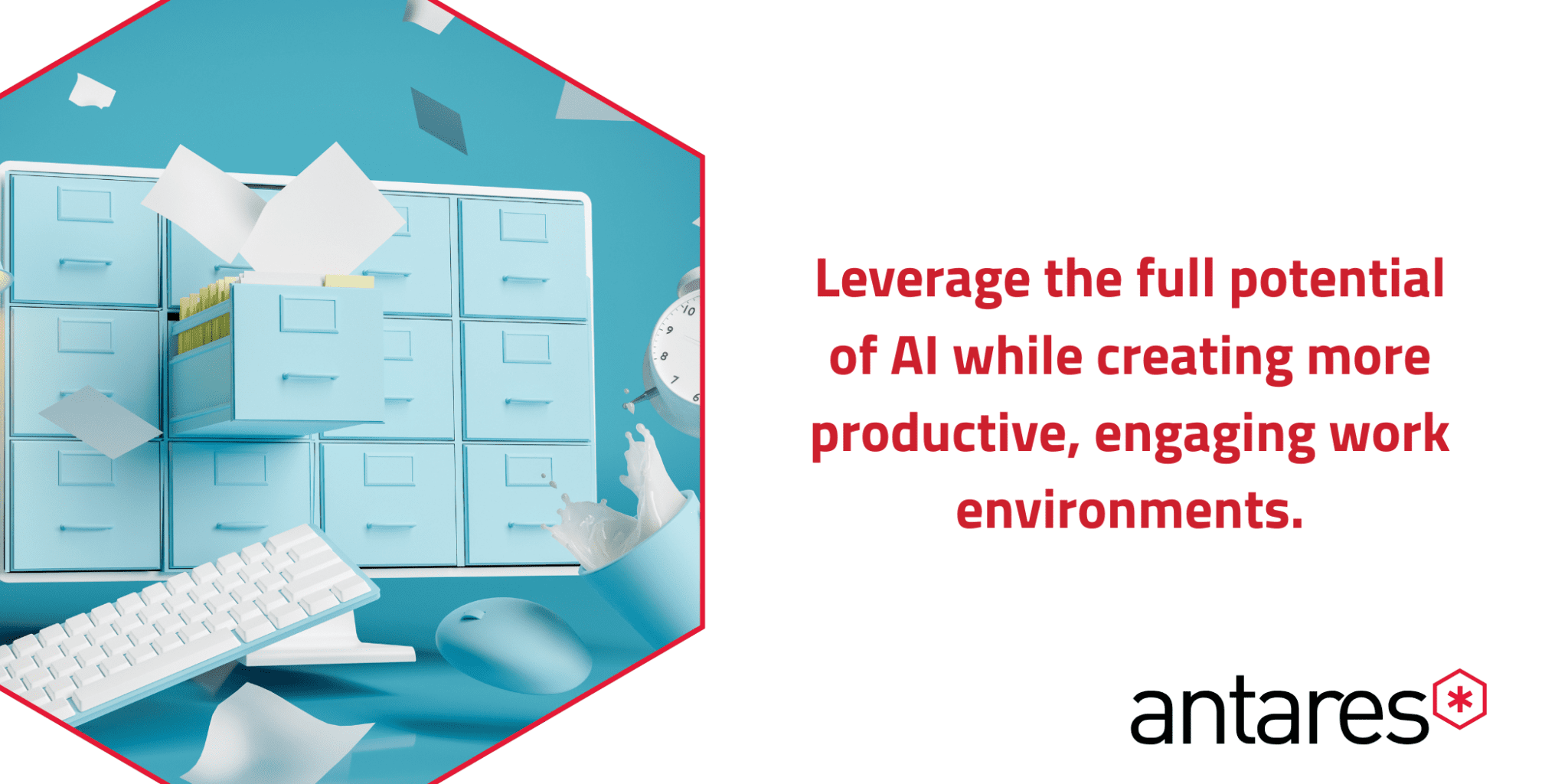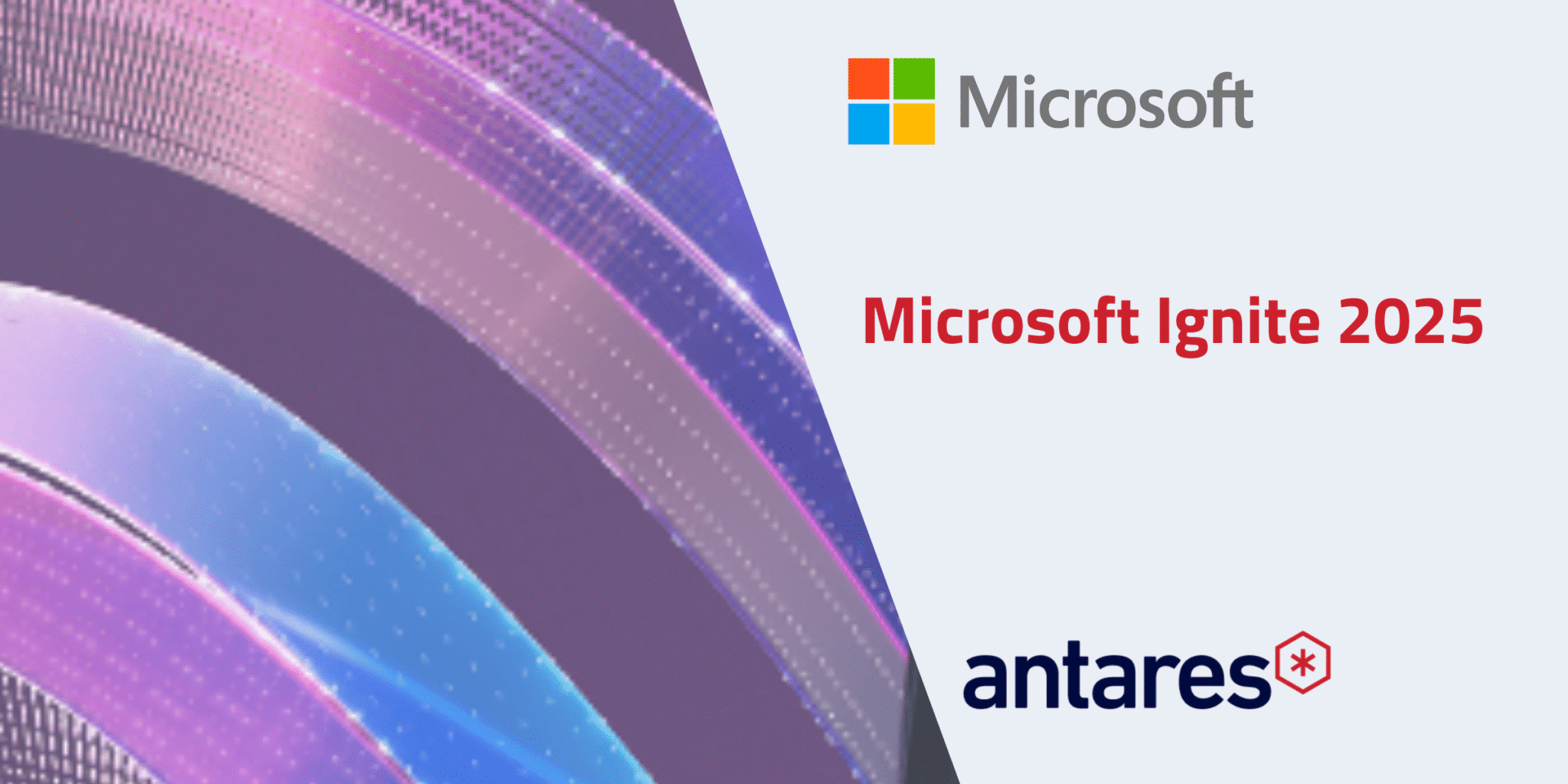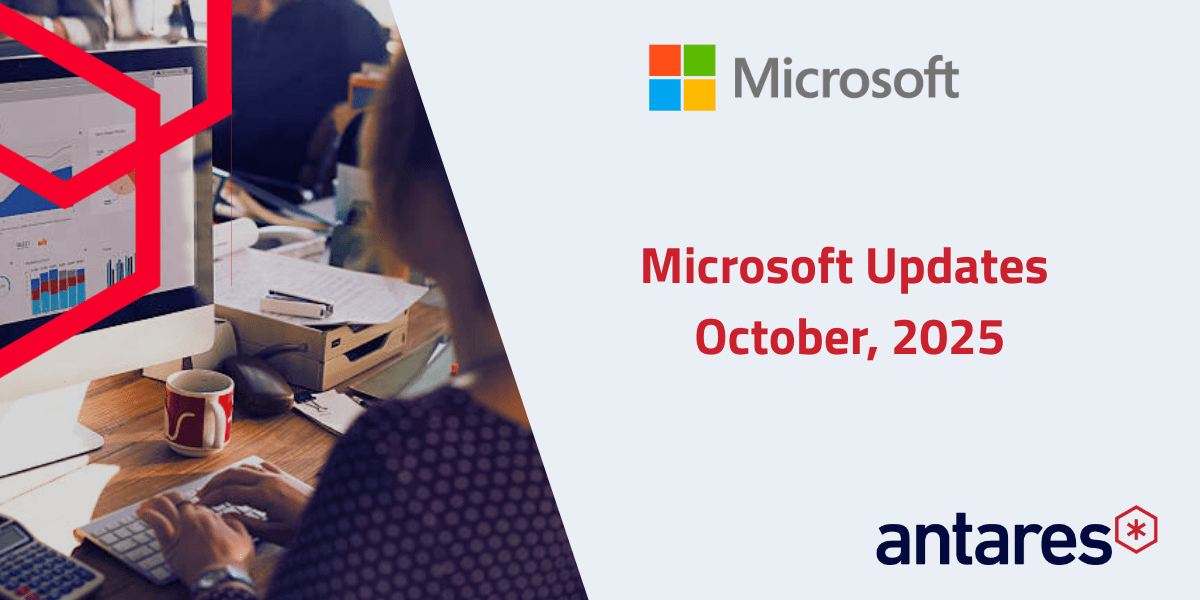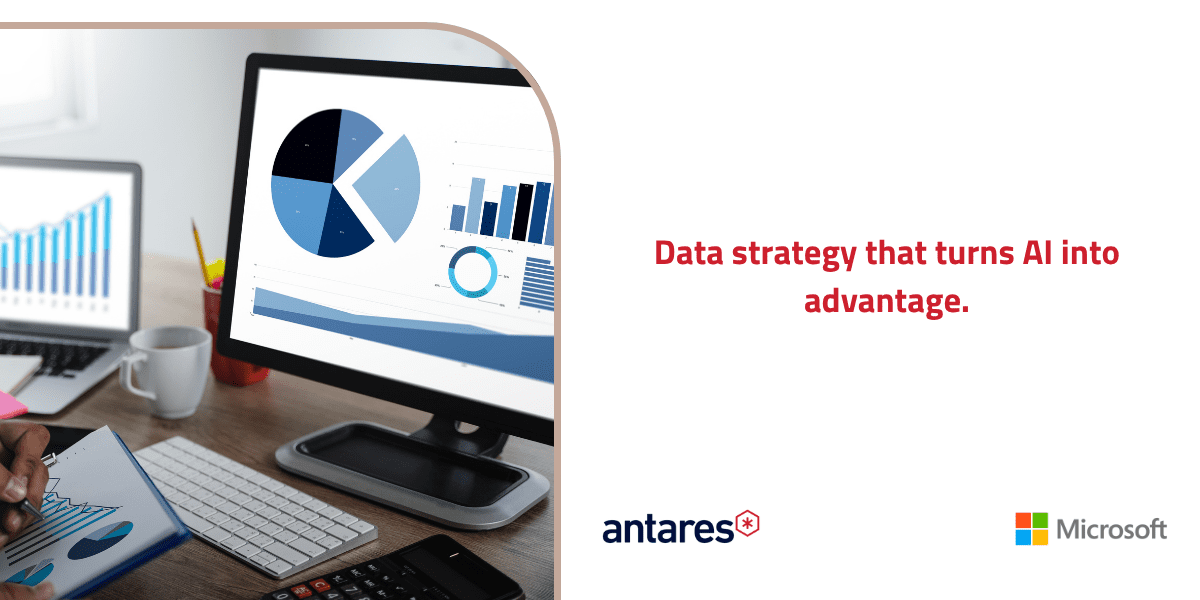Earlier this year we explored how the modern workplace is evolving in response to AI advancements. Janaka Amarasekera, our Modern Work Practice Lead, highlighted four key trends that are revolutionising how organisations manage information, support employees, and drive productivity. These trends will serve as the foundation for successful AI adoption in the workplace throughout 2025.
As we navigate this transformative period, understanding these trends is crucial for organisations looking to maintain competitive advantage while supporting their most valuable asset—their people.
Understanding Your Data: The Foundation of Modern Work
The digital age has created an unprecedented explosion of data. With the Microsoft ecosystem alone processing over 2.5 exabytes of data daily, organisations face critical challenges in managing their information landscape.
“The digital age has seen an era of unprecedented data generation,” Janaka explains. “That amount of data is really incomprehensible, and that immense scale highlights the critical importance around data management, security and also analytics.”
For 2025, understanding your data isn’t just a technical requirement—it’s a strategic imperative. Organisations are asking fundamental questions that will shape their approach to information management:
- Where does my data live across the multitude of systems and applications?
- Where are the risks of data overexposure or accidental leaks through AI services?
- Is my data ready for AI, with appropriate guardrails to protect sensitive information?
- What tools and processes do I need to categorise and define risk for my organisation?
Janaka emphasises a crucial insight that will shape 2025’s approach to information: “AI is going to be the UI to your data.” This perspective represents a fundamental shift in how we think about information access and management. Rather than requiring users to navigate complex systems to find what they need, AI will increasingly serve as the interface between people and information—but only if the underlying data is properly organised, classified and secured.
Organisations that invest in understanding their data landscape now will be better positioned to leverage AI capabilities safely and effectively as they mature throughout 2025.
Storage Optimisation: Managing the Data Explosion
As data volumes continue to grow exponentially, storage costs have become a significant concern for organisations of all sizes. In 2025, we’ll see increased focus on strategic approaches to storage optimisation that go beyond quick fixes.
“Reducing your storage cost is going to be intrinsically linked to understanding your data itself,” Janaka points out. This connection between data understanding and cost management highlights the need for a holistic approach rather than treating storage as merely a technical infrastructure problem.
Organisations will pursue two key strategies to manage storage costs in 2025:
First, many will implement archiving processes and tools to move content to cheaper storage tiers based on specific parameters and rules. Janaka describes this as “often seen as the quick win to reduce your storage costs with cloud providers.” While effective in the short term, this approach doesn’t address the underlying issue of data proliferation.
The more sustainable strategy focuses on the proper disposal of content. “A lot of customers are speaking to us about how we build a long-term plan around proper disposal of content to reduce the overall cost,” Janaka explains. This requires robust governance frameworks, clear retention policies, and automated processes to identify and remove redundant, obsolete, and trivial data.
By combining both approaches—archiving to manage immediate costs and disposal to address long-term growth—organisations can develop a sustainable strategy for managing the data explosion while maintaining access to valuable information.
AI-Driven Document Management: Automation with Intelligence
Document management has traditionally been one of the most challenging aspects of information governance, requiring significant manual effort and user compliance. In 2025, AI will transform this space by automating critical processes while enhancing security and compliance.
“How do organisations look to address the critical challenges they face around document management?” Janaka asks. The answer lies in leveraging AI to handle tasks that previously required extensive human intervention:
- Enhancing security through automation: Rather than retrospectively addressing data risks, AI systems can identify and mitigate potential security issues proactively as documents are created and shared.
- Improving accuracy in data extraction: AI can process documents with greater consistency and precision than manual methods, reducing errors and increasing information reliability.
- Automating categorisation and indexing: With the vast volumes of data being processed daily, AI tools can automatically classify and organise documents based on content, context, and metadata.
- Streamlining compliance: AI systems can ensure documents meet necessary regulatory standards and are easily auditable—particularly important given increasing compliance requirements over the past decade.
Perhaps most importantly, AI-driven document management will shift the burden of information governance from users to systems. “How do we remove the burden of users to understand the ins and outs of document management, records management, information management, letting users worry about doing their work?” Janaka explains. “Let the technology and automation worry about the information management lifecycle.”
This shift represents a fundamental change in approach—from user-dependent processes to system-driven governance—that will significantly improve compliance while freeing people to focus on higher-value activities.
Improving the Human Experience: The True ROI of AI
While cost savings and efficiency gains often dominate discussions about AI benefits, 2025 will see organisations focusing increasingly on how these technologies can enhance the human experience at work.
“We’ll see a continued exploration of how organisations improve the relationship with one of their most important assets—being people,” Janaka observes. “Especially of how AI, how we define the ROI beyond the dollar amount invested in AI technologies.”
This people-centred approach to AI value will manifest in several key ways:
- Automating routine tasks: AI tools like Copilot can handle repetitive work such as summarising emails and meetings, giving employees more time for meaningful work. “A simple example of Copilot is saving 30 minutes per day, which adds up to 2½ hours per week,” Janaka notes.
- Improving wellbeing: AI systems can monitor work patterns to detect potential burnout signals like consistently long hours, giving managers insights to support their teams better. The time saved through automation isn’t meant to increase workloads but to create space for wellbeing.
- Supporting career development: When managers spend less time on administrative tasks, they can invest more in employee development. Janaka emphasises that “customers are wanting to explore how managers spend more time with their employees to plan and define their career progression.”
- Enhancing communication quality: AI tools are raising the standard of workplace communication by helping people articulate ideas more clearly and professionally. “AI has allowed us to better communicate with one another—better way of writing emails, better way of summarising information,” Janaka explains.
This focus on human outcomes represents a maturing understanding of AI’s potential. Rather than viewing these technologies primarily as cost-cutting tools, forward-thinking organisations are leveraging them to create more humane, supportive work environments where people can thrive.
Strategic Implementation: Making Modern Work a Reality
As organisations look to implement these modern work capabilities, having a strategic approach is essential. From our conversations with customers, several key considerations emerge:
Align AI investments with specific use cases: Rather than deploying technologies broadly, identify the workflows and personas that would benefit most from AI enhancement. “Having a clear understanding of what the scenarios are where AI can help” is crucial, according to Janaka.
Prioritise user education and support: Technology alone isn’t enough. “What we’ve seen a lot of customers do over the last probably 18 months since M365 Copilot was released is that they realised that the investment beyond just deploying the tool is really important,” Janaka explains. Ongoing training and support are essential for sustained adoption.
Address information architecture fundamentals: AI tools like Copilot won’t change security principles—they’ll reflect them. If information is improperly secured, AI might surface it to unauthorised users. “The fundamentals of best practice around how we manage the platforms, whether it’s from a modern work or data perspective, still apply,” Janaka emphasises.
Balance speed with governance: While getting started with AI is important, having appropriate guardrails is equally crucial. Janaka suggests a pragmatic approach: “Just because there are challenges from your environment and your data, there are ways that we can help in terms of excluding certain data sources from the experience… Start getting people to use what AI can do to help them while we remediate in the background.”
Conclusion: Preparing for the Modern Workplace of 2025
As we continue through 2025, the modern workplace will be defined by the convergence of information management, AI-driven automation, and human-centred design. Organisations that succeed in this environment will be those that approach technology as an enabler of human potential rather than simply a cost-saving measure.
The four trends Janaka outlined—understanding data, optimising storage, implementing AI document management, and improving human experience—provide a framework for thinking about modern work transformation. By addressing these areas strategically, organisations can position themselves to leverage the full potential of Microsoft’s ecosystem while creating more productive, engaging work environments.
Remember that transformation is a journey, not a destination. “You’re never really going to be fully ready for AI,” Janaka notes. “It’s about how we understand where the risk lies so that we can take the appropriate risk in deploying these solutions.”
By starting with clear use cases, investing in proper data foundations, and maintaining a focus on human outcomes, your organisation can navigate the evolving modern work landscape successfully throughout 2025 and beyond.
At Antares, we’re helping organisations across industries implement these modern work capabilities through strategic planning, technology implementation, and ongoing support. If you’re interested in exploring how these trends might apply to your specific context, reach out to discuss your modern work journey.



